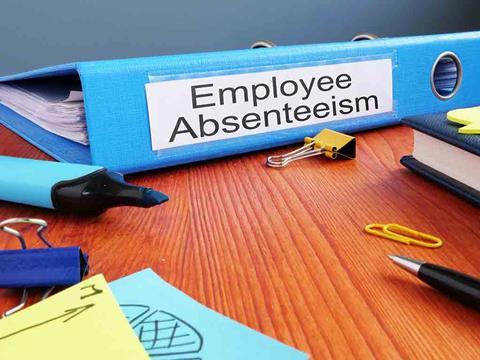
HR professionals have the highest absenteeism rate across the UK workforce, according to data by Employment Hero.
The employment and payroll platform analysed anonymised data from more than 105,000 staff and used the Bradford Factor formula to score employees’ absence over a year. It combines spells of absence with total days.
It found that the HR and accounting sectors recorded an average Bradford Factor of 113, which was the highest across all surveyed industries. Conversely, the education and training sector had an absenteeism score of 25.
Gen Z workers aged 18–24 in HR and accounting recorded an average Bradford Factor of 185, which is considered indicative of potential wellbeing or engagement concerns.
Meanwhile, organisations with more than 500 employees recorded an average Bradford Factor of 73, which is more than double that of employers with fewer than 20 staff, scoring 33. Full-time workers are also more likely to be absent, with a score of 48 compared to 37 for part-time and 18 for casual staff.
In addition, junior and intermediate staff recorded the highest absenteeism scores, at 43 and 48 respectively, while director-level employees had the lowest levels of absence, with a score of 23.
Kevin Fitzgerald, UK managing director at Employment Hero, said: “Sadly, the high rates of absenteeism are not surprising given the typically high workloads and stress many professionals experience, but these rates must be taken seriously. These numbers should prompt serious reflection across the industry. High absenteeism, especially among younger, more junior employees, suggests a disconnect somewhere in how we’re supporting early career talent.
“HR and accounting are the engine rooms of any business and the cost of lost time and productivity is significant. The health and wellbeing of these professionals underpins the health and wellbeing of the workforces they manage and support, so it’s vital professionals in HR and accounting get the help they need and these rates are reduced substantially.”









